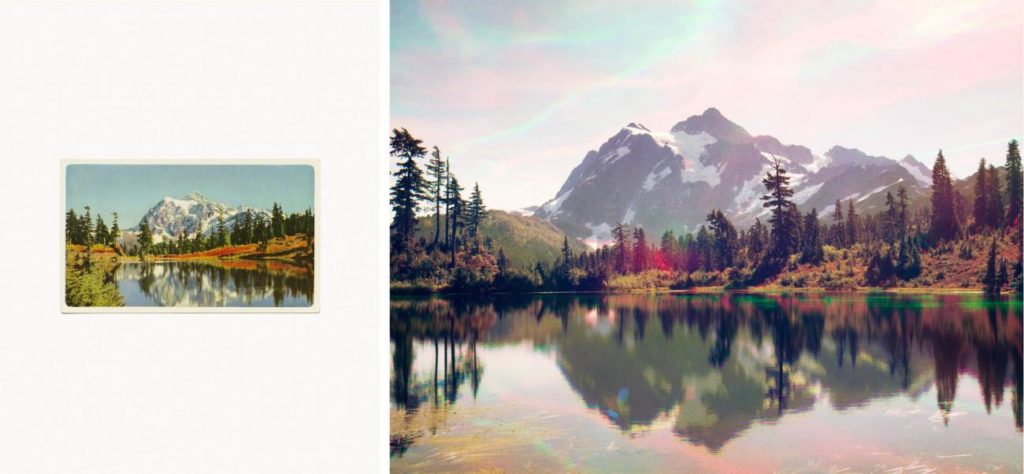
Image: Mt. Shuksan from Mt. Baker Lodge Lakes / 48° 51’ 58.302”, -121° 40’ 43.458” Mount Baker, US 2014 © Peter Funch
Interview with Peter Funch by Unseen Amsterdam.
“Unseen caught up with Project Pressure’s Peter Funch to discuss his trips to the Northern Cascade Mountain Range, how climate change is the greatest wake up call to humanity and getting this message heard.
How did the collaboration with Project Pressure start?
It started back in 2013 after a conversation I had with Klaus Thymann while working on another project entitled Last Flight. A project about America in decay, declining and transforming. Klaus was looking for new artists for Project Pressure and was searching for new approaches of communicating and illustrating climate change. During this conversation emphasised the fact that although I’m not a scientist, I wanted to document climate change and glacial retreat in a more deconstructed way. I also saw it as a race against time, as climate change is an issue we drastically need to address.
The title for your project is “Imperfect Atlas” can you explain how you came up with it and what it means? How does it relate to photography?
The project features photographs taken during my multiple trips to the Northern Cascade Mountain Range in between 2014 to 2016. The photographs are contemporary recreations of vintage Mt. Baker and Mt. Rainier postcards found on Ebay and such. Using these ephemera, maps, and satellite images I was able to locate positions where the original postcard images were made. Consequently I re-captured the mountain’s glaciers from the same positions to create comparative juxtapositions of then and now. As an aesthetic point of departure, I’ve used RGB-tricolour separation, a technique invented in the 19th century during the Industrial Revolution. RGB-tricolour separation is a process that uses red, green, and blue filters to make three monochrome images, which are then combined to make a single full-color image. However the current glacial recession predates the use of color photography: the recession dates to 1850, while tricolour projection became the standard in the following decade. With this timeline in mind, we can say that the photographic representation of glaciers has always included it as a subject in a state of decline and regression. The use of RGB-tricolour separation incites a dialogue on the influence of mankind on nature. I see it as our blindness to the consequences we as society are creating in our desire to control nature.
How did the project influence your photographic practice?
I felt that I acted more as an artist rather than a scientist. I could also see myself being more relevant as a storyteller rather than being a researcher. However, I feel that I have taken on a more scientific way of working.
Can photography change the world?
By adding to the dialog, whatever the problem at hand is about, you make the message stronger.
What role can photography play in a big issue like climate change?
One person that inspired me a lot is Naomi Klein as she is describing the situation in the book, This changes everything: Climate change is and will be the biggest wake up call to humanity. This message is now coming in floods, hurricanes droughts and the endless wild fires so time it’s to face greed, selfishness & capitalism before we sink. The more information we have at hand, the better can we deal with the problems that may face us. In this case I wanted to illustrate the havoc of climate change and to inform about its consequences.
What else are you currently working on?
At the moment I’m finishing the second print of my book 42nd and Vanderbilt which is being published by TBW Books this fall. Thereafter, I’m producing new works from the series The Imperfect Atlas for Paris Photo 2018.
What upcoming projects are you most excited about?
The Victoria and Albert Museum in London will be showing my work 42nd and Vanderbilt in the context of the history of photography and how it has development. This is very exciting for me and I am happy to be included in their collection.”
